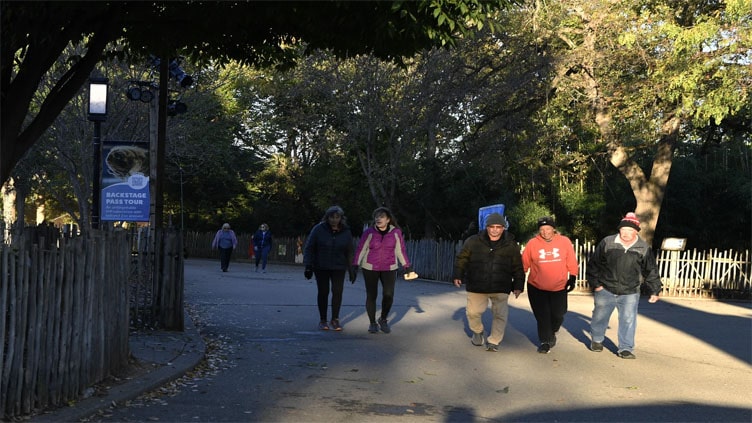What makes walking so great for your health and what else you need to do

resistance training that builds muscle strength, endurance also needed
(AP) - Medical experts agree that walking is an easy way to improve physical and mental health, bolster fitness and prevent disease. While it’s not the only sort of exercise people should do, it’s a great first step toward a healthy life.
“You don’t need equipment and you don’t need a gym membership,” said Dr. Sarah Eby, a sports medicine physician with Mass General Brigham. “And the benefits are so vast.”
What can walking do for you?
Walking can help meet the U.S. surgeon general’s recommendation that adults get at least 2 1/2 hours of moderate-intensity physical activity every week. This helps lower the risk of heart disease, high blood pressure, dementia, depression and many types of cancer.
Walking also improves blood sugar levels, is good for bone health and can help you lose weight and sleep better, added Julie Schmied, a nurse practitioner with Norton Healthcare, which runs the free Get Healthy Walking Club.
Another advantage? It’s a low-impact exercise that puts less pressure on joints as it strengthens your heart and lungs.
For all its benefits, however, walking “is not enough for overall health and well-being” because it doesn’t provide resistance training that builds muscle strength and endurance, said Anita Gust, who teaches exercise science at the University of Minnesota Crookston.
That’s especially important for women’s bone health as they age.
Experts recommend adding such activities at least twice weekly – using weights, gym equipment or your own body as resistance — and doing exercises that improve flexibility like yoga or stretching.
Do you really need 10,000 steps a day?
Nearly everyone has heard about this walking goal, which dates back to a 1960s marketing campaign in Japan. But experts stress that it’s just a guideline.
The average American walks about 3,000 to 4,000 steps a day and it’s fine to gradually work up to 10,000, Shmied said.
Setting a time goal can also be useful. Shmied suggests breaking the recommended 150 minutes per week into 30 minutes a day, or 10 minutes three times a day, for five days. During inclement weather, people can walk in malls or on treadmills.
As they become seasoned walkers, they can speed up the pace or challenge themselves with hills while still keeping the activity level moderate.
“If you can talk but not sing,” Eby said, “that’s what we consider moderate-intensity exercise.”
How do you stay motivated?
Walking with friends – including dogs – is one way.



